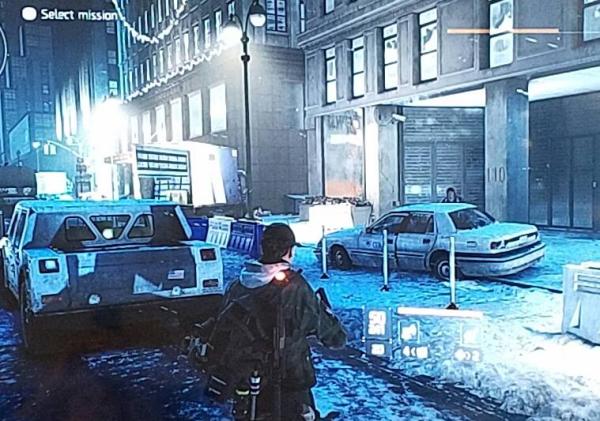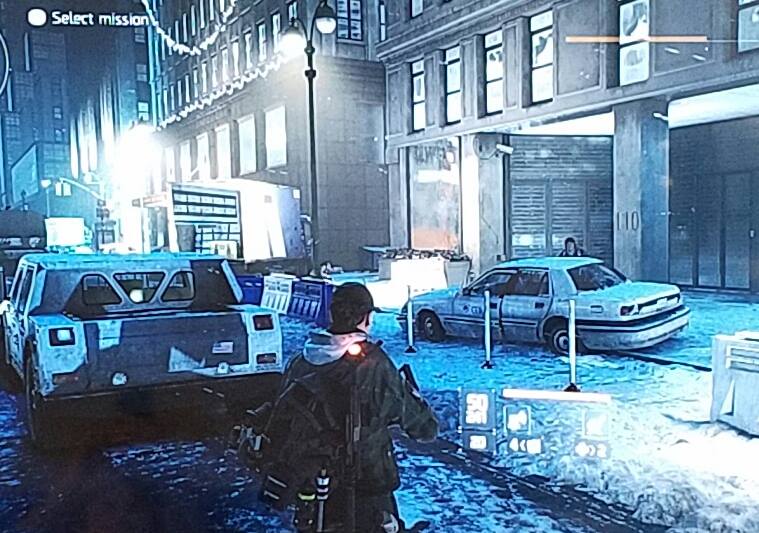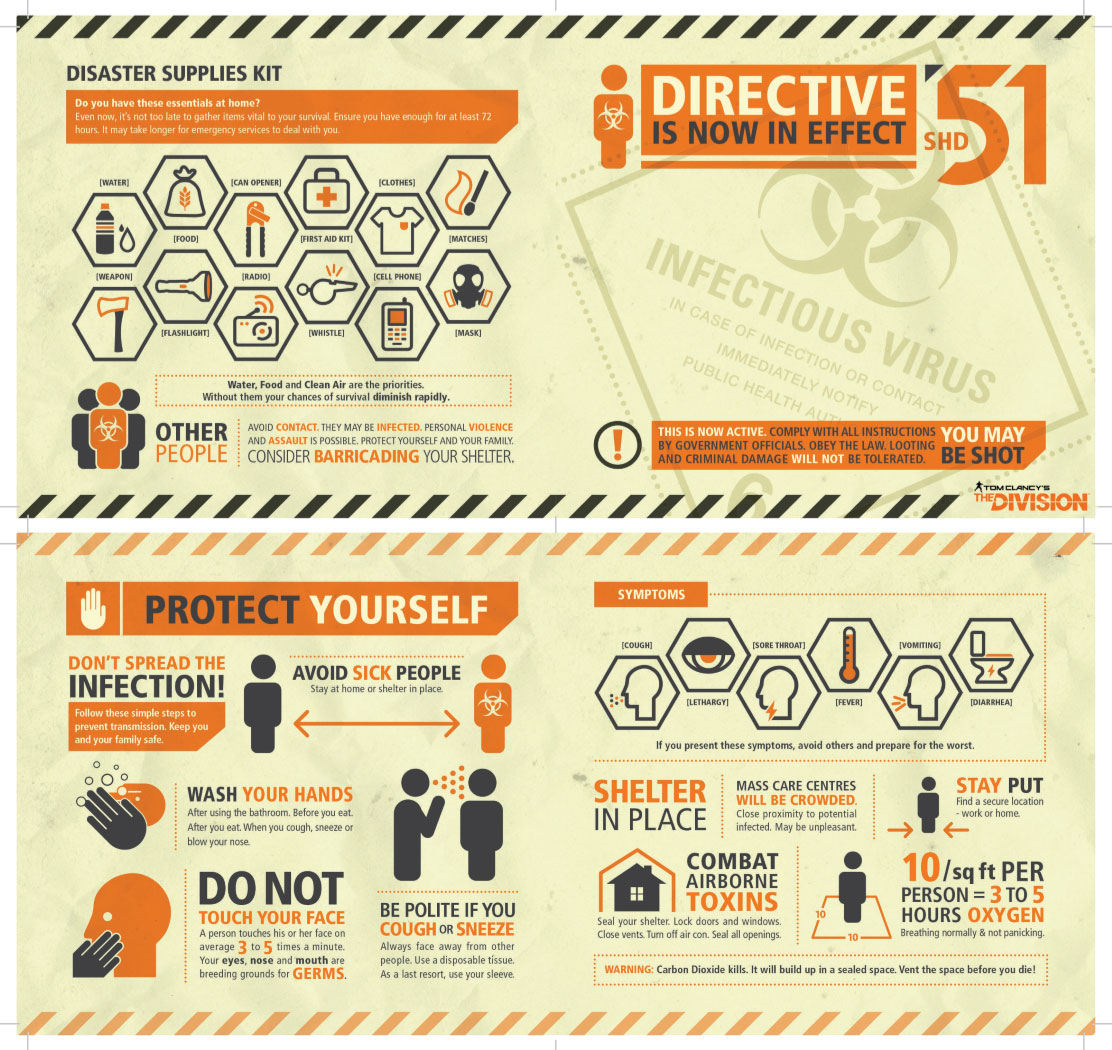
In March of 2016, a game called "Tom Clancy's The Division" was released. Unlike other "shooter" games such as "Destiny" and "Call of Duty", "The Division" has a compelling science story.(1) And the plot began on "Black Friday", the busiest shopping day of the year.
Since Black Friday is in two days, I did an analysis of what it would take for the eco-terrorists to really win a big one; killing off humanity using the thing they they believe humans love most - money. The game revolves around activation of Executive Directive 51, a "continuity of government" plan in case of a catastrophic emergency. In the game, it is invoked because a deadly virus has been introduced into Manhattan using dollar bills on Black Friday, which if you are not American is the shopping day after Thanksgiving in the United States. The virus spreads quickly, people die, and chaos ensues. It spreads so rapidly, and with such devastating effect, that Manhattan is quarantined and society breaks down. Incorporating both Operation Dark Winter and Directive 51, the federal government sends in a clandestine unit known as "The Division" to restore order.
That's you. Well, me, since I played the game. I have to figure out what happened. That means assembling a team of experts who can help and looking for clues while not getting contaminated or shot in a lawless death zone.
This is not a game review, I only care about the science premise. And as part of the science mystery premise, one of the tasks is to find dollar bills containing the virus - which is hindered because the bills can't have been exposed to heat over 200 degrees. Easy enough, you might think, there are not a lot of wildfires in Manhattan, except once sanitation workers discovered that heat kills the virus they began to burn everything, including bodies, which means a lack of original samples.
After playing it, I thought about how realistic it was. How many dollar bills in circulation would it take to have mathematical likelihood of finding samples? Hundreds? Thousands? How about causing it to spread?
Contagion: R naught? Are too!
That ability to spread, how contagious an infectious disease is, is expressed in a basic reproduction number, known as R0 (pronounced “R naught”). It is an expression of the number of people likely to catch a disease from one contagious person. Though often used interchangeably, contagious and infectious are different. For instance, the Ebola virus is highly infectious (a tiny amount can make you ill) but it is not highly contagious because it is spread by bodily fluids after symptoms appear. (2)
As you already guessed, in order to get an epidemic, the R0 needs to be greater than 1, meaning each infection causes more than one new infection, compounding its impact and creating an epidemic. Below 1 and it will fade out, because people recover or die without spreading it widely. R0 is not an indicator of fatality or severity. For context, the deadliest pandemic in recent times, the 1918 Spanish flu, had an R0 value of around 2.8, while measles has an R0 of 18. Obviously measles spreads really well, far better than flu. HIV has an R0 of 2 because even though it requires body fluid transmission it can stick around for a long time.
In the game, the disease is spread using dollar bills and it is piggybacked onto stolen Smallpox samples. An object that spreads an infectious disease is called a fomite. It's a good premise for a game because no one can really say how prevalent fomites are for virus transmission and that makes it more creative than yet another animals-spreading-disease scenario. (3)
Why use smallpox? For one thing, it's eradicated and that gives it a certain mystique. It's exclusively a human to human disease and it can be spread by coughing or sneezing or...clothing. What are dollar bills made of? They are 75 percent cotton and 25 percent linen, which accounts for most clothing. (4)
So someone at game developer Ubisoft thought that part through. The big issue will be how many dollars to use. These are eco-terrorists, they don't want an antidote created before their mission is accomplished, and the way to avoid that is to not leave original samples lying around for clandestine government agents to find. But if the bad guys use too few dollars the disease can be easily isolated or die off. People also increasingly use credit cards. No one will cash out if they get skimpy on the bills, pardon the pun.
The chances of success are improved by having a dense population and little biodiversity, which is Manhattan. There's no way to know with certainty who will be immune or what their behavior will be, but at least that second part is easier to know when it is Black Friday in a densely populated area. Poor people, the most susceptible population in a health crisis, are going shopping then because their money has to go farther so they want a good deal, and they are more likely to use cash. Engineers know sometimes you "overbuild" for safety and our eco-terrorists would likewise pad the number of bills to be sure to create harm.
Yet smallpox by itself is a problem for them. Eco-terrorists want society to collapse, so they need their disease to spread fast. The incubation period for smallpox is too long, about two weeks, and in the game society had already collapsed by then. So Smallpox had help. The story mentions that the virus is a smallpox chimera with traces of Swine Flu, Ebola, Dengue, Hantavirus and Marburg too.

In the game, after finally making my way to our office at 110 East 42nd Street, across from Grand Central. It hasn't looked this bad since Dinkins was mayor. Credit: Hank Campbell
That's not just artistic license, though infectious disease experts I consulted say Dengue and Marburg are just fictional shock value because there is no real benefit added. Hanta is very stable and easy to disseminate but flu would be the best bet, they said. Though the story doesn't use language like "viral chatter" - mutations as species mix - it would be necessary if this were to work over the long haul. However, this pandemic happens in weeks so mutations are not helping much. So smallpox alone wouldn't be enough because even though they broke into one of the two approved labs - in Atlanta and Koltsovo, Russia - that store it, and it's deadly, they can't change what it does by itself. The long incubation period sets limitations for real eco-terrorists. Where it does provide value is that it can be spread by direct contact with infected bodily fluids or clothing or bedding that has the virus on it - and as I mentioned, dollar bills are mostly cotton,(5) making those a good place to start.
Calculating R naught
Diseases were around long before we were and in modern times there has been interest in estimating the spread of diseases like HIV and SARS using population-level models in order to keep pandemics from turning into epidemics. Models are tricky, and using an object, a fomite, as the transmitter is even more difficult to predict. One reason is because there is a lot of variability in human behavior. Doctors still use pagers, for example, and it can be easy to unconsciously touch them before, during or after a patient visit. Many shoppers may not touch money at all. However, bad guys could overcompensate for that by using enough bills and going where there will be density and predictable behavior. Like Manhattan, on Black Friday.
Last year, Macy's in Manhattan had 16,000 people visit from 5 PM until closing, even on Thanksgiving Day. And 74 percent of weekend shopping will occur the next day. We keep being told that retail is dead, but 90 percent of retail sales (and that's not including gas, restaurants, etc.) are in stores, more people shop on Black Friday weekend than cast ballots in an election. It's a meaningful number using cash in person.
"In Manhattan, we're totally susceptible," says American Council on Science and Health microbiologist Dr. Julianna LeMieux. "Basically none of us have antibodies for smallpox but at least that has outward symptoms. With SARS a few years ago they instead had to have travelers at major airports go through fever scanners. If you had a fever you were going into a room, whether they knew you had SARS or not. That was controversial and I'm being a little dramatic but that's how it was stopped. It was a worldwide success."
So the island makes sense and behavior is predictable on that day. They just need locations to place enough dollars.
They don't use real names for businesses in the game, maybe Starbucks doesn't want to be associated with disease the way Chipotle is, so one of the missions instead sends you to Abel's Department Store, which just happens to be where Macy's sits in Herald Square. There you will find an intact bill. But how many did they use? In order to realistically calculate the R0 we need timeframes.
We learn during the course of the game that after one week schools had closed because of the pandemic. After 9 days two-thirds of Manhattan had been evacuated and 48 percent of those left behind were infected. By the time the game starts, on January 6th, around 300,000 people have died, though those could be in other cities where travelers visited.
Given all the information now at our disposal, we can come up with a number.
R0 ∝ (infection/contact) x (contact/time) x (time/infection)
which is written as
R0 = τ · c¯ · d
which is transmissibility multiplied by the rate of contact between susceptible and infected individuals by the duration of infectiousness. That allows us to create a pretty valid Susceptible-Infected-Removed (SIR) model because Manhattan is an island. Yes, people move around but most people in Manhattan live in Manhattan. You don't see a lot of people from Staten Island visiting unless they must.
So I consulted an infectious disease epidemiologist to impartially do a SIR calculation and provide an R0. Since it is a fomite, even if the disease is transmitted in two ways afterward, the SIR would need to be 1.3, and given the short timeframe the story provides, the R0 would have to be around 7. That means the terrorists would need to have almost 100,000 bills, even if 16,000 people shop in Macy's / Abel's in an afternoon.
That's actually good news for your shopping comfort this Friday. While it is possible to place 100,000 bills into circulation all at once, it is not realistic for a plucky team of bioterrorists out to save Gaia from the Anthropocene Epoch. Despite what some claim, conspiracies are really hard to pull off when the group is of any decent size. So buy gifts with comfort, there is little chance of dollar bills spreading a deadly disease this year.
But what eco-terrorism should we worry about?
It isn't norovirus, though norovirus is the worst, so avoid Chipotle. However, that won't kill you. Smart bioterrorists out to cull humanity would instead put carfentanyl in our water supply. But that is an article for another time.
NOTES:
(1) Why is it called "Tom Clancy's The Division"? No idea, he has been dead since 2013 and stopped writing before that, but if you pay for a famous name you use it and he had used eco-terrorism as a theme before. The story was compelling enough that a movie studio bought the rights. It is essentially a paramilitary combat game, where you have to fight criminals who escaped from Rikers Island, former sanitation workers known as The Cleaners who know the virus is killed by heat and end up burning more than those with the disease, and a private military contractor with heavily-armed former soldiers.
Because the Idyll of the scientist at the heart of this is population control, it has a very eugenics feel. You can almost imagine Margaret Sanger and Oliver Wendell Holmes cheering from the great beyond.
(2) But Ebola has a high fatality rate and an R0 of nearly 2, which is scary if you think about patients in the U.S. increasing exponentially. However, the carriers were isolated pretty fast and though it is highly infectious it is not highly contagious, it requires bodily fluids after symptoms appear. Thus it was not a problem in America.But that speaks to why it's so dangerous for well-heeled deniers in Oregon, Washington and California to be anti-vaccine about things that spread more easily. Since measles (and flu) travel through the air, their families can easily harm people with suppressed immune systems or who are too young to be vaccinated. However, the Swine Flu that killed tens of millions in 1918 can't do that so easily today. Thanks to prevention and containment, when H1N1 came back to prominence in 2009, its R0 was half of 1918, about 1.4.
(3) Diseases from animals - zoonotic - account for 60 percent of the 400 or so emerging infectious diseases that have been identified since 1940. So those work but it is unlikely an ecoterrorist would unleash a horde of monkeys in Manhattan when there are already plenty of rats and The Black Plague is the most famous epidemic. Regardless, the game uses dollar bills so zoonotic pathogens are out. Ditto for the 1918 Spanish influenza pandemic, because that was airborne.
(4) What works in favor of a pandemic occurring? The World Health Organisation is considered to be in charge when a pandemic is looming. If you have seen the recent work of IARC or the IPCC or any U.N. peacekeeping force, you know we'll all be dead by the time the wrong decision even gets out of a UN committee.
Ubisoft is more prepared. Here is their poster about what to do: (Click image for full size)
(5) They could aerosolize it but the smallpox virus is not strong, in lab experiments 90 percent of aerosolized smallpox virus dies within 24 hours. In the presence of sunlight or heat, it occurs even faster.




